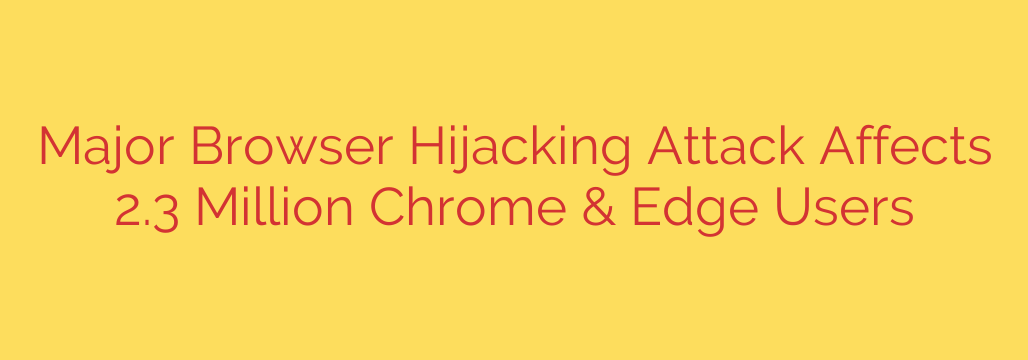
A widespread and concerning digital threat has recently impacted millions of internet users, affecting an estimated 2.3 million individuals primarily using Google Chrome and Microsoft Edge. This large-scale incident involves a sophisticated browser hijacking campaign designed to take control of users’ web browsing experience without their consent.
Browser hijacking occurs when unwanted software or malicious extensions take control of your web browser’s settings. This typically involves changing your homepage, default search engine, or directing you to specific websites without your permission. In this recent attack, the campaign is reported to leverage malicious browser extensions which, once installed, redirect users’ web traffic, often to display intrusive advertisements or funnel searches through ad-supported sites. Users experience frustrating redirects, unwanted pop-ups, and a degraded browsing experience.
Beyond the obvious inconvenience, browser hijacking poses significant security and privacy risks. It can expose you to further malware, phishing attempts, and potentially allow attackers to monitor your online activity or steal sensitive information like login credentials or browsing history.
You might be affected by this type of hijacking if you notice:
- Your homepage or search engine has changed unexpectedly.
- Searches are redirected through unfamiliar websites.
- New toolbars or extensions appear that you didn’t install.
- You see an excessive amount of pop-up ads.
Staying safe online requires vigilance. To prevent becoming a victim of browser hijacking:
- Always download software and browser extensions only from official sources, such as the official Chrome Web Store or Edge Add-ons website.
- Be wary of clicking on suspicious links or downloading attachments from unknown senders.
- Carefully review the permissions requested by browser extensions before installing them. If an extension asks for excessive permissions that seem unrelated to its function (e.g., reading all your data on all websites), it’s a red flag.
- Keep your browser and operating system updated to patch security vulnerabilities.
If you suspect your browser has been hijacked:
- Check your browser’s extensions or add-ons page and remove any suspicious or unwanted entries you don’t recognize or remember installing.
- Reset your browser settings to their defaults. This can often undo unwanted changes made by hijackers.
- Run a full scan with reputable antivirus and anti-malware software to detect and remove any malicious programs that might be on your computer.
This large-scale attack serves as a stark reminder of the importance of proactive online security measures and careful browsing habits. By understanding the risks and following these best practices, you can significantly reduce your chances of becoming a victim of browser hijacking and protect your digital life.
Source: https://go.theregister.com/feed/www.theregister.com/2025/07/08/browser_hijacking_campaign/








